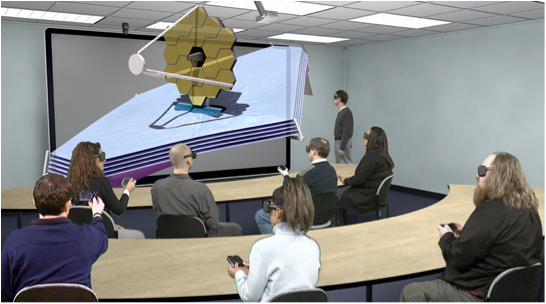Immersive Learning Spaces

Immersive learning spaces will make use of augmented and virtual reality (AR and VR) but most attention on those technologies are around consumer use, especially gaming. What will be the other markets? Is education one of those markets?
Microsoft has been pushing its HoloLens AR headset as an enterprise product, but only in industrial applications. Ford, for example, is using HoloLens headsets to improve its design process, allowing modifications of both its clay models and real cars to be viewed and modified on the fly, without having to re-sculpt or rebuild anything. ThyssenKrupp has been equipping service technicians with HoloLens headsets that show the faults they're trying to diagnose. Engineers remotely can can annotate the physical infrastructure technicians are seeing and guide maintenance and repairs.
A recent EDUCAUSE article predicts that in another decade, "immersive technology will become nearly ubiquitous and virtually unnoticeable, embodied in our eyeglasses and other wearable devices. But before we get there, we have the exciting opportunity to build our understanding of pedagogical frameworks, design new physical and virtual learning spaces, and create transformative learning experiences with immersive technologies."
VR and AR are found in some makerspaces in libraries and media centers, but thinking more creatively about their use in the design of learning spaces is still at an early stage.
Innovative spaces include both formal and informal opportunities for learning. Some of this requires physical spaces, but it also includes simple design choices such as offering a swivel chair for 360 degree viewing.
For education, pricing is an important factor for adoption and VR headset pricing is slowly but surely approaching costs that will make them more attractive for schools.
FURTHER READING
VR and AR: Transforming Learning and Scholarship in the Humanities and Social Sciences
Virtual Reality Devices – Where They Are Now and Where They’re Going
VR and AR: Driving a Revolution in Medical Education & Patient Care
Trackbacks
Trackback specific URI for this entryThe author does not allow comments to this entry
Comments
No comments